| Depth | 67-70% |
| Table | 59-63% |
| Length/Width Ratio | 1.00-1.04 |
| Visual Style | Non-crushed ice |
Searching for cushion diamonds using these criteria will enrich for diamonds with the classic cushion profile and optimal light performance. We automatically highlight such diamonds in our price curves to make the search process easier.
Cushion Cut Proportions
Diamond cutters have two goals:
- Maximize light performance – Well-cut diamonds command higher asking prices.
- Maximize yield from diamond rough – Diamond prices increase with carat weight.
Keeping these two points in mind, we can infer a cushion’s optimal proportions by observing how they’re cut in practice. We downloaded the depth and table proportions data for all cushion diamonds listed on James Allen and Blue Nile to create the heatmap below. Brighter blue indicates more diamonds with each combination of table and depth. Our recommended depth 67-70% and table 59-63% are outlined in green.
Diamond cutters prefer to target 67-70% depth (notice the vertical band of brighter blue). There is a broader range for tables, but we’ve capped our recommendation at table 63% because a larger table begins to sacrifice light performance for yield (similar to our discussion of crown height for princess diamonds). If we assume that cutters generally try to create beautiful diamonds, then our recommendations capture the sweet spot and avoid the diamonds with odd proportions the cutter chose solely to maximize yield.
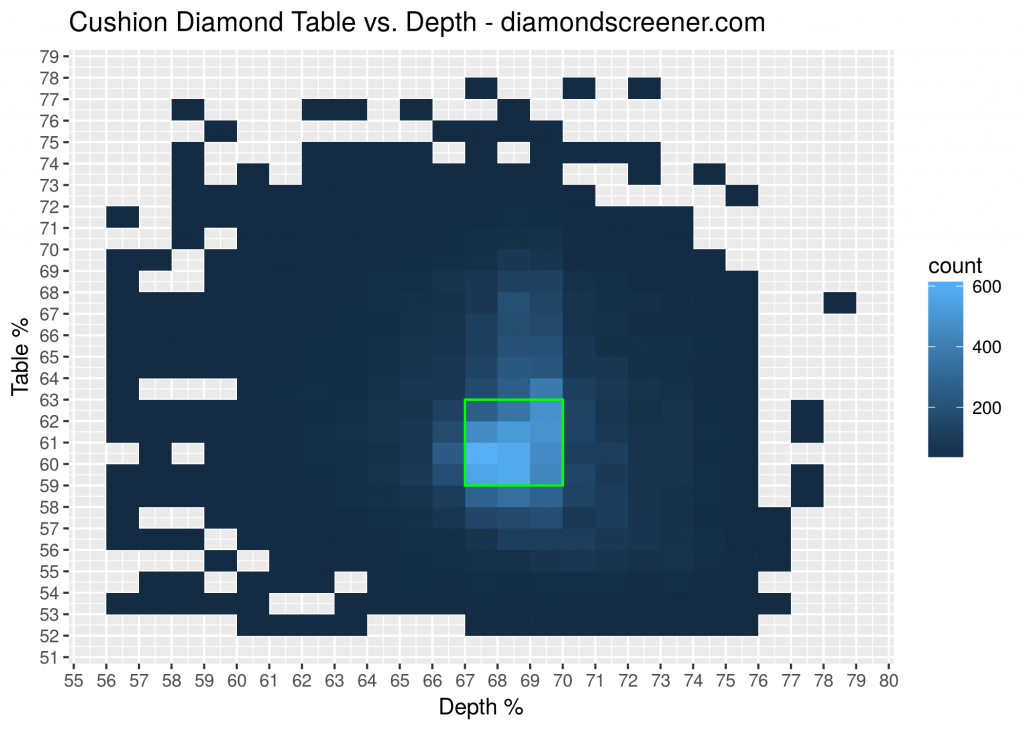
Square is the traditional cushion shape. Most cushions are square, so look for a length/width ratio < 1.05. If you prefer a rectangular cushion, then we suggest looking for a length/width ratio > 1.1, but you might also consider a rectangular radiant instead. Diamonds 1.05-1.10 are neither square nor rectangular.
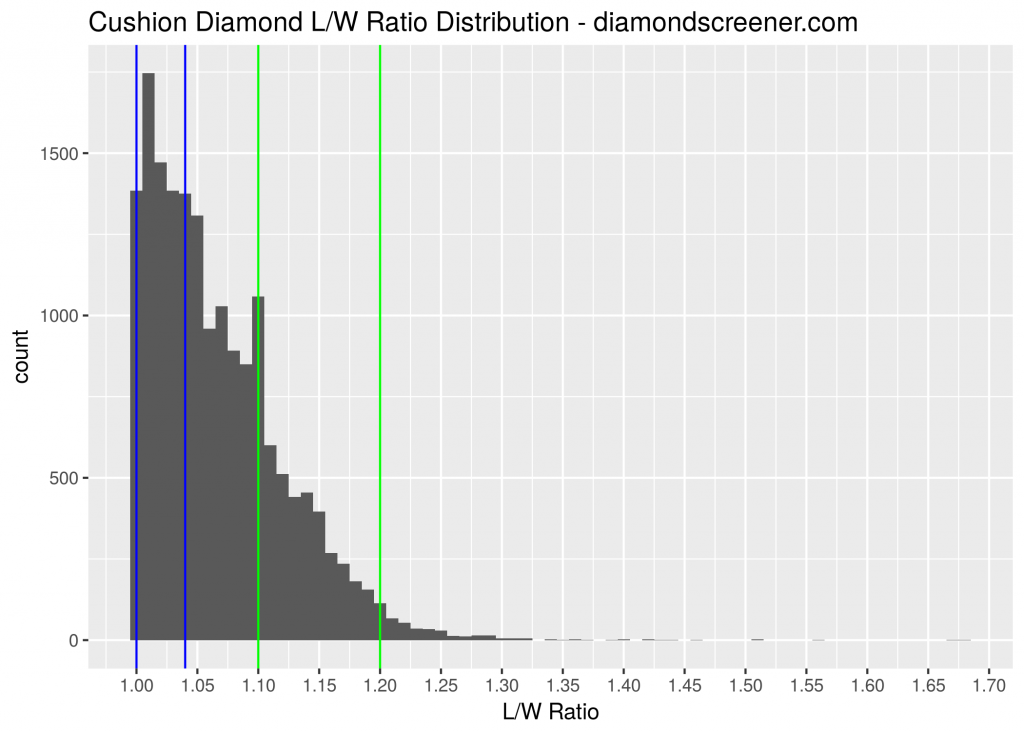
Visual Styles
Beyond the proportions, cushion diamonds can be cut in many different ways. Some styles are better than others. We’ve listed the five major types of cushions with examples below.
We suggest avoiding the “crushed ice” look commonly seen in cushion modified diamonds. Instead, we recommend buying a “non-crushed ice” cushion modified hybrid, a cushion brilliant, a hearts and arrows cushion, or an old mine brilliant.
Cushion Modified Brilliant
Crushed Ice
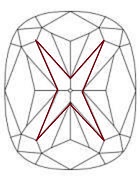
The crushed-ice version of the cushion modified brilliant can be identified visually or by looking at the pavilion facet diagram (example above). Although there are many different variations, the main pavilion facets (the “X”) don’t extend all of the way to the corners.

Crushed ice is the most common, least expensive cushion style on a $/carat basis. It’s cheaper because it’s been cut to maximize carat weight rather than light performance. It hides carat weight underneath on the pavilion side where you can’t see it. For cushion diamonds of the same carat weight, crushed ice cushions have a smaller visual spread (surface area). See the graph below.
- A non-crushed ice cushion on average has a ~6% larger spread than a crushed-ice cushion.
- A brilliant cushion on average has a ~10% larger spread than a crushed-ice cushion.
Crushed ice cushions are better suited for fancy colored diamonds because the crushed ice look tends to retain color.
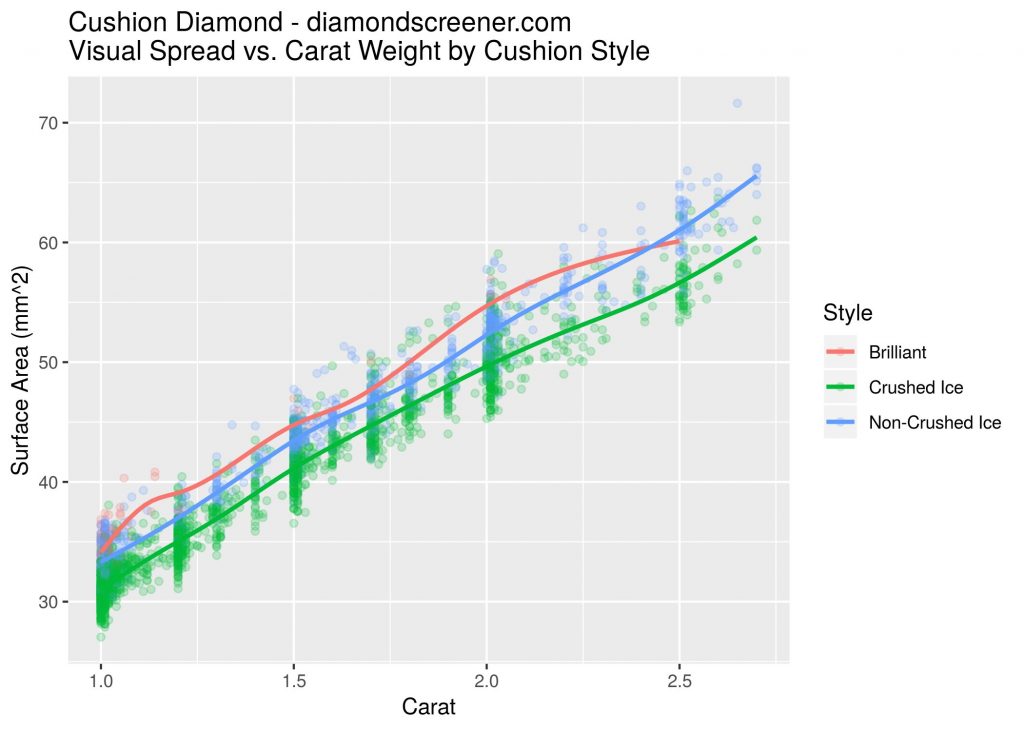
Non-Crushed Ice
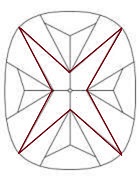
The cushion modified brilliant hybrid can generally be identified by the four pavilion main facets that form a cross. The main pavilion facets (the “X”) extend all of the way to corners.
This style of cushion has broader facets that reflect more light back to the observer compared to crushed-ice cushions. Hybrids tend to be in the middle of the price range for cushion diamonds and represent the best overall value in terms of price for performance.
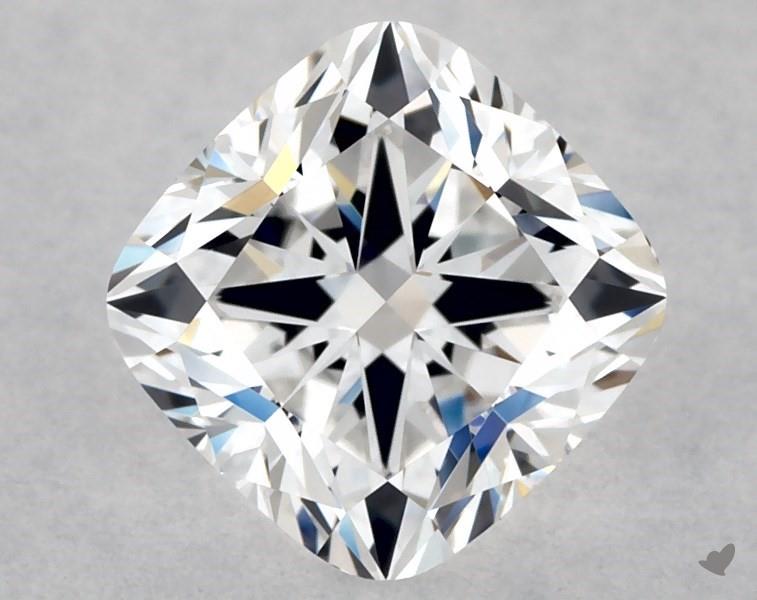
Cushion Brilliant
Brilliant
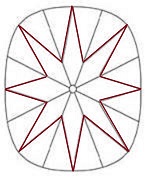
Cushion brilliants are more expensive than cushion modified brilliants because their eight pavilion main facets sacrifice carats during the cutting process. They have larger facets.
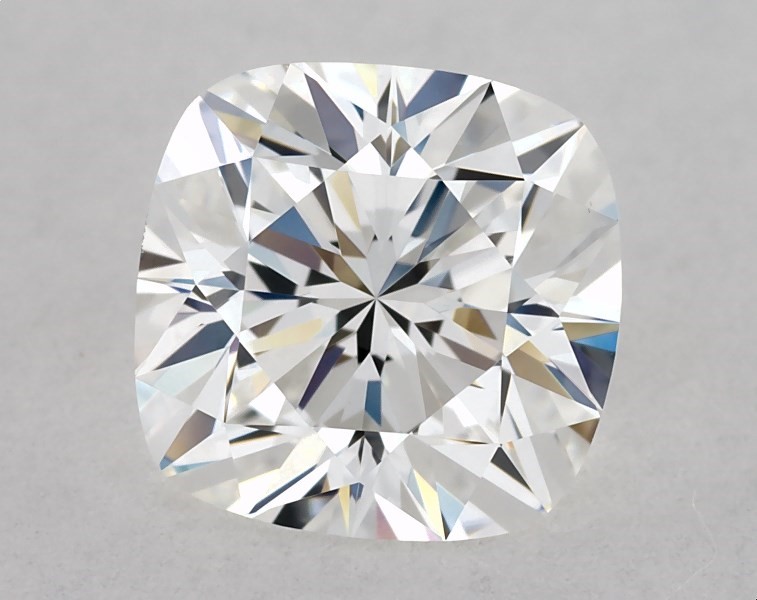
Hearts and Arrows
Hearts and arrows cushions are cut to mimic the optics of a round brilliant diamond. With a distinct visual appearance, they are typically more expensive. Non-branded hearts and arrows cushion diamonds can offer better deals, but they are relatively rare due to their patent status.
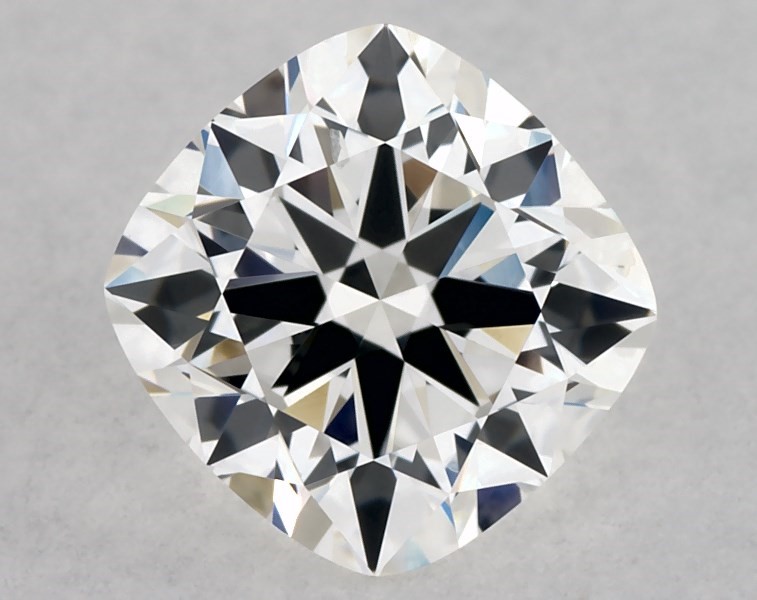
Old Mine
Old mine brilliants are typically the most expensive style of cushion diamonds. With a high crown height and big, chunky facets, old mine cut diamonds capture the spirit that makes cushion diamonds unique compared to round, princess, or radiant cut diamonds. They will have the broadest flashes of light.
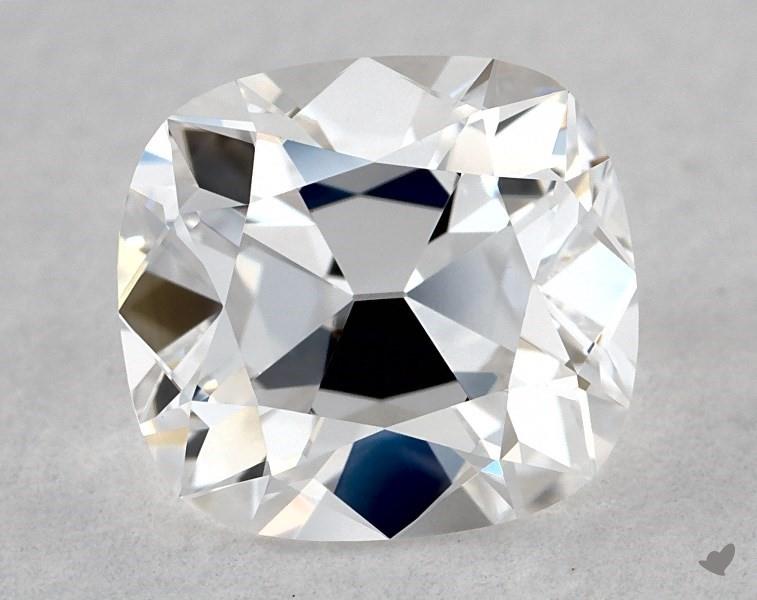
Summary
A cushion cut diamond cannot be bought by its certificate and specifications alone. You need to see how the diamond is cut, either with pictures and videos or in-person. A cushion modified hybrid, cushion brilliant, hearts and arrows, or old mine brilliant faceting pattern gives you the best chance of maximizing light performance.